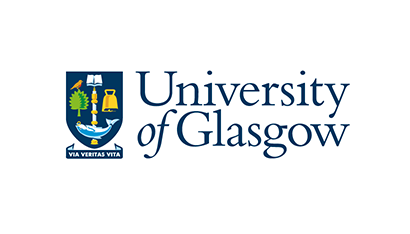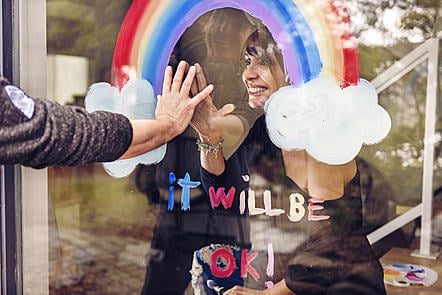First aid basics: Tips for basic first aid training
Learn essential first aid tips so you’re able to help at the scene of an accident or emergency. Your intervention could help to save lives.

Every day, thousands of people get seriously injured around the world. Whether they suffer from a small burn or a life-threatening injury, basic first aid training is essential for preventing such incidents from worsening. It can often be the difference between life and death.
Understanding some first aid basics could help to save lives and keep someone safe until the emergency services arrive. However, 85% of adults lack the knowledge and confidence to act if someone requires first aid, which shows that more needs to be done to spread this life-saving knowledge.
In this article, we will explore first aid tips and look at the different accidents and emergencies you should prepare for. Keep in mind, reading this article won’t make you a first aider. There are plenty of official training courses that you can take to become a first aider, like this one by British Red Cross. This is just to help you feel more prepared to deal with emergency situations.




What is first aid?
First aid involves responding quickly to a situation where someone is suffering from an illness or injury. In theory, the emergency first aid you deliver should help to prevent someone’s condition from worsening, preserve life, and help promote recovery. Before the emergency services arrive, the care you provide can be essential.
With basic first aid training, an individual should have the knowledge and techniques to carry out emergency care. Whether you’re in the workplace, at home, or in a public environment, learning these basic skills could have a hugely positive impact on those around you when an incident occurs.
Benefits of learning the first aid basics include:
- Being able to provide support in emergencies
- Being able to follow the right procedures
- Being able to deal with personal health crises.
Read this guide on how to make a first aid kit, so you can be prepared for all eventualities.
Initial first aid steps
Before you start looking at first aid advice for various accidents and emergencies, the initial first aid basics you need to know is ABC.
- Airway. If you find that someone isn’t breathing, you should always check first whether their airway is clear by opening their mouth and having a look.
- Breathing. If their airway is clear but they are still unable to breathe, then you will need to intervene with rescue breaths. To check whether they’re breathing, either look for chest movements, listen, or feel for rising and falling breath.
- Circulation. While you’re performing rescue breaths, carry out chest compressions to keep their blood circulating. You can learn how to do CPR in our other article.
First aid basics: accidents and emergencies
A key part of basic first aid training is familiarising yourself with the different types of incidents you may have to respond to. In this section, we take a look at some of the most common accidents and emergencies and share some first aid tips on how to deal with each incident.
Anaphylaxis
Anaphylaxis, also known as anaphylactic shock, can be caused by a severe allergic reaction to an insect sting or food. The adverse reaction can occur very quickly, so it’s essential that you’re able to respond quickly. It’s likely the person will find it very hard to breathe, as their tongue and throat may swell and obstruct their airway.
First aid tips for anaphylaxis
- Call 999 (or your emergency number) immediately.
- Check if they’re carrying any medication, as someone who suffers from severe allergies will likely have some medication with them at all times. This will often be a pre-loaded syringe.
- Either help the person administer the medication or do it yourself if you’re trained to do so.
- Once the medication has been injected, look after the person until professional help arrives.
Choking
If the choking is mild, the airway of the individual will only be partially blocked and they should be able to get rid of it by coughing or spitting. However, if their choking is more severe, you will need to help them. Without your intervention, they could eventually become unconscious.
First aid tips for choking
- If the person is over one year old, start performing back blows.
- Stand behind the person and lean them forward slightly. Support their chest with one hand, then grab this first with your other hand and give up to five sharp blows between the person’s shoulder blades with the heel of your hand.
- Repeat until the blockage has cleared.
- If the blockage doesn’t clear, then give five abdominal thrusts, also known as the Heimlich manoeuvre. To do this, stand behind the person and wrap your arms around their waist. Make a fist with one hand and grasp it with the other hand. Finally, start pressing into the abdomen using quick, upward thrusts.
- If they’re still choking, then call 999 and ask for an ambulance.
Burns
For burns and scalds, it’s vital that you’re able to respond quickly and stop the burning process. The severity of the burn will depend on how deep it is and how large the damaged area is. This will help you to determine whether emergency services are required, depending on whether it’s a first-degree or third-degree burn. If the burn is severe, make sure you immediately call 999.
First aid tips for burns
- Cool the burn with cool running water until the pain starts to relieve a little. Remove any clothing or jewellery near the burn.
- Once the burn has cooled, cover it loosely with cling film or use a non-fluffy material or bandage.
- Do not apply lotions or creams to the burn.




Heavy bleeding
The main aim when someone is bleeding heavily is to apply and maintain pressure on the wound in order to prevent further blood loss. Almost all bleeding can be controlled with first aid.
If possible, make sure you use disposable gloves to reduce any chance of infection. Check to see if there is anything embedded in the wound. If there is, don’t press down on the object and build up padding around it.
If they are bleeding excessively and the wound is severe, then make sure you call 999 immediately.
First aid tips for heavy bleeding
- If nothing is embedded in the wound, apply and maintain pressure on it using a clean pad or dressing (if possible). Apply pressure until the bleeding stops.
- Bandage the wound firmly using a clean dressing.
- If it continues to bleed, apply another pad over the top and bandage it in place. Never remove the original pad.
- If a limb has been severed, such as a finger, put it in a plastic bag or wrap it in cling film. Don’t wash it.
You can learn more about how to manage wound infection with this course by BSAC and the European Wound Management Association.
Drowning
Before you carry out emergency first aid, when someone is drowning it’s important to assess whether it’s safe for you to enter the water. Make sure you don’t put your own life at risk. Once on land, you can then start to apply your first aid knowledge and call 999 for help from the emergency services.
First aid tips for drowning
- When the person is back on land, check to see if they’re breathing. If not, open up their airway and give five initial rescue breaths before starting CPR.
- If they’re unconscious but still breathing, then put them in the recovery position.
- Continue to monitor the individual’s health and check their breathing until the emergency services arrive.
Electric shock
If someone has suffered from an electric shock, then make sure you switch off the electric current at the mains before approaching them. This will disengage the person from the electrical supply. Always make sure you consider your own safety before getting involved.
First aid tips for electric shocks
- Make sure you don’t go near the person until you have ensured the electrical supply has been switched off. Otherwise, you’ll also risk being electrocuted.
- If, after the supply has been turned off, the individual isn’t breathing, then make sure you dial 999 and wait for the emergency services to arrive.
Fractures
The emergency first aid you administer will depend on the severity of the fracture and several other key factors. If the individual is unconscious or is bleeding heavily, then you must control the bleeding first and perform CPR. If they are conscious, then keep the fracture still until you can get them to a hospital.
First aid tips for fractures
- Decide whether you need to call 999 or not. If you do, then ring for an ambulance immediately and keep the person still.
- If the fracture is particularly bad and they’ve broken their leg or back, for example, then make sure they don’t move until the ambulance arrives.
- They might need an anaesthetic when they arrive at the hospital, so don’t give them any food or drink.
Poisoning
Swallowing a toxic substance, a drug overdose, alcohol abuse, or food poisoning can all lead to loss of life if not dealt with quickly. In most cases, you should call 999 immediately to get professional help. If they’re unconscious, then you should perform CPR. However, mouth-to-mouth resuscitation isn’t advised in case their mouth and airway are contaminated.
First aid tips for poisoning
- Try to find out what the person has taken so you can inform the ambulance staff.
- Don’t give them anything to eat or drink.
- Stay with the person in case the condition gets worse.
- If they vomit, then make sure you try to keep some for the paramedic to assess.
Heart attack
A heart attack is one of the most common life-threatening conditions and can be quite frightening to witness and respond to. If someone appears to be having a heart attack, then call 999 and move them into a comfortable sitting position.
First aid tips for heart attacks
- Try to get them to sit on the floor with their knees bent and their head and shoulders supported.
- If they’re conscious, you can ask them to chew a 300mg aspirin tablet slowly.
- If their condition deteriorates and they become unconscious, make sure you open their airway, check their breathing, and start CPR.
- If they are in cardiac arrest, you’ll need to call 999 immediately.
Stroke
The earlier someone receives help when they’re having a stroke the better. Make sure you call 999 straight away and use the FAST guide to help deal with the individual.
First aid tips for strokes
- Face. Their face may drop to one side, they could be unable to smile, or their mouth or eye may droop.
- Arms. They may not be able to lift both arms because of weakness or numbness.
- Speech. Their speech may be slurred.
- Time. If you notice any of those symptoms, you should dial 999 immediately.
Shock
It’s important to look out for signs of shock when carrying out first aid basics as a result of a serious injury or illness. Shock can be life-threatening, as the circulatory system fails to supply oxygenated blood to a body’s vital organs. Signs of shock can include clammy skin, sweating, dizziness, feeling sick, yawning, and thirst.
First aid tips for shock
- Call 999 and ask for an ambulance.
- Try to lie the person down and raise their legs.
- Make sure you keep them warm but don’t give them anything to eat or drink.
- Monitor their condition and reassure them until the emergency services arrive.
Discover online first aid courses on FutureLearn
Now that you know a bit more about first aid basics, the importance of understanding first aid techniques, and when you might be required to use them, it’s time to continue your learning journey.
At FutureLearn we offer a range of online courses about first aid, with some offering guidance about basic first aid training or psychological first aid.
Take a look at our diverse selection of courses below.
- Basic First Aid: How to Be an Everyday Hero by the University of Glasgow
- Psychological First Aid: Supporting Children and Young People by the UK Health Security Agency
- Antimicrobial Stewardship in Wound Management by the British Society for Antimicrobial Chemotherapy and the European Wound Management Association
- COVID-19: Psychological First Aid by the UK Health Security Agency
- Basic First Aid for Animals and Pets by Learning Lounge
- Personal Trainer’s Toolkit: Mental Health First Aid for Fitness Trainers by Central Queensland University
- Understanding Epilepsy and its Neuropsychology by the University of Padova
- Diabetes Explained by UCOL (Universal College of Learning) & Te Pūkenga – New Zealand Institute of Skills and Technology.






